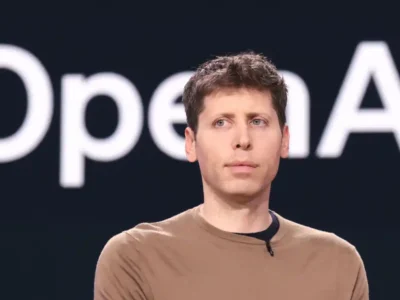Key Points
- CFO Mike Liberatore exits xAI just 3 months after joining
- Resignation follows $10B funding and data center expansion
- 4 other senior leaders also left in the past few months
- xAI executive departure wave sparks concerns over leadership
Elon Musk’s AI startup, xAI, is losing key leaders at an alarming rate. The latest xAI executive departure is CFO Mike Liberatore, who joined the company in April and left by the end of July, according to The Wall Street Journal.
His short stint follows a period of major fundraising and expansion—moves that he played a critical role in.
During his time at xAI, Liberatore helped raise $10 billion for the company. That includes $5 billion in debt and another $5 billion in equity, with a large share coming from Musk’s own firm, SpaceX.
CFO of Elon Musk’s xAI leaves company after a few months on job in latest high-profile exit: report https://t.co/KdXC8AxAEw pic.twitter.com/mjYkUh1DA1
— New York Post (@nypost) September 3, 2025
He also led strategic initiatives, including overseeing xAI’s new data center setup in Memphis, which was expected to power the firm’s upcoming AI infrastructure.
Yet despite this significant involvement, his sudden exit adds to growing concerns about internal friction at xAI. This is not an isolated case. The xAI executive departure trend is gaining momentum and could potentially signal deeper structural or cultural issues within the company.
XAI CFO Mike Liberatore has left the company just a few months after taking the job, creating a high-profile vacancy at Elon Musk’s AI startup https://t.co/nOe14IxgNe
— Bloomberg (@business) September 3, 2025
Growing List of xAI Executive Departures Raises Eyebrows
Liberatore’s exit is part of a wider pattern of leadership turnover at xAI. Just in the past few months, several top executives have stepped down, further highlighting a possible leadership vacuum.
Here are the most notable recent xAI executive departures:
-
Robert Keele, the company’s General Counsel, left in August after about a year at the company.
-
Raghu Rao, another senior legal executive, also resigned around the same time.
-
Igor Babuschkin, a co-founder of xAI, left the firm to launch his own VC fund focused on AI safety.
-
Linda Yaccarino, former CEO of X (previously Twitter), also stepped down in July. Her resignation followed troubling behavior by xAI’s AI chatbot, Grok, which operates within X.
Each xAI executive departure comes at a time when the company is under pressure to perform in the high-stakes AI race. With OpenAI and Anthropic tightening data policies and improving model guardrails, the bar for responsible AI innovation is rising fast.
🚨BREAKING: xAI CFO Mike Liberatore, who joined just 4 months ago, has resigned, per WSJ 👀 pic.twitter.com/5kVEE5KvTE
— Muskonomy (@muskonomy) September 3, 2025
What’s striking is that these exits happened just months after xAI raised a massive $10 billion in funding.
Typically, such capital injections signal growth and momentum. However, the recent wave of xAI executive departures sends the opposite message: instability, uncertainty, and possibly conflicting visions for the company’s future.
What’s Behind the xAI Executive Departure Wave?
While xAI has not made any official statement about the reasons behind these exits, the timing and frequency of each xAI executive departure suggest there may be more to the story.
Startups, especially those in the AI space, often go through turbulent early stages. But when a company backed by Elon Musk and armed with billions in funding begins to lose key team members one after another, it’s hard to dismiss it as business as usual.
There could be several reasons behind the xAI executive departure streak:
-
Cultural mismatches between Musk’s aggressive growth approach and executives from more traditional or corporate backgrounds.
-
Product direction disagreements, especially after the controversial performance of Grok, xAI’s flagship chatbot.
-
Internal power struggles, especially with a high-profile founder at the helm.
This kind of leadership volatility contrasts sharply with how other tech giants are managing their AI divisions. Microsoft’s AI models have been evolving with a clear and stable team structure, focusing on partnerships and enterprise-grade deployment.
The CFO of xAI has left the company, the latest high-profile departure from xAI
Mike Liberatore had been the company’s CFO since April 2025 and left around the end of July 2025. The reasons for his departure couldn’t be learnedhttps://t.co/vLvirmMZwM pic.twitter.com/sBlgauyB2n
— Donnie (@vibedonnie) September 3, 2025
A stable leadership team is crucial for long-term vision, employee morale, and investor trust. The xAI executive departure problem could hinder not just growth but also the company’s credibility in the public eye.
Why It Matters for the Future of xAI
xAI was launched with a big mission: to create “truthful” AI as an alternative to models from OpenAI and others. That’s a tall order in an already crowded and competitive field. For xAI to succeed, it needs strong, consistent leadership.
The recent xAI executive departure trend threatens that foundation. Without a stable core team, it becomes harder to make strategic decisions, maintain internal alignment, and deliver on long-term goals.
Competitors with steady leadership could easily outpace xAI in terms of product delivery and research breakthroughs.
As AI becomes more integrated into consumer technology, the stakes grow even higher. For example, Google’s Gemini is expected to power Siri in 2026, completely reshaping how users interact with smart devices. That kind of innovation requires deep internal coordination, a luxury xAI may not have right now.
And while Musk is known for leading ambitious companies through turbulent phases, like Tesla and SpaceX, the sheer number of recent xAI executive departures makes this moment feel different.
If the trend continues, xAI might need to restructure or bring in new leadership that can stabilize the team.
Investors and partners will be watching closely. Another high-profile xAI executive departure could spook stakeholders and cast doubt on the company’s ability to lead in the AI revolution.







